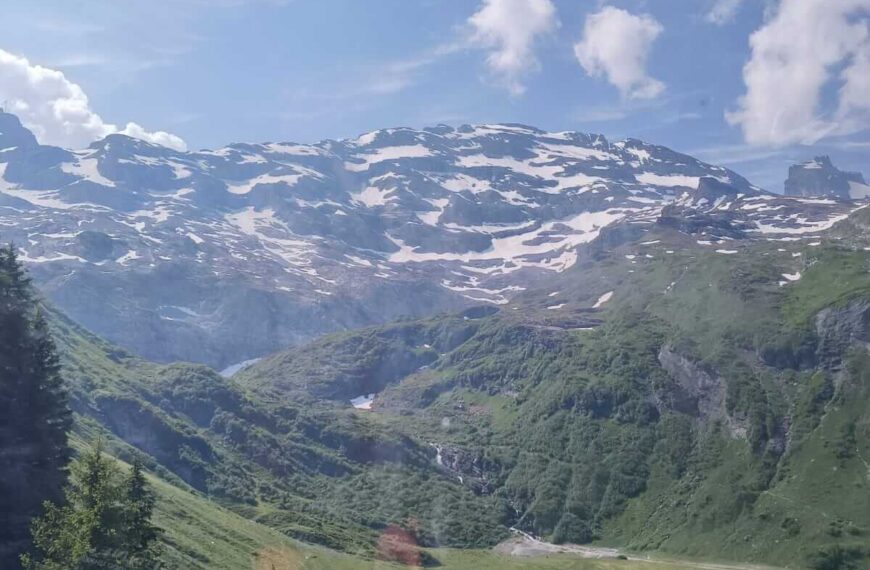Soumya takes us on a tour of Bhutan. It’s sometimes called “Druk Yul,” which means “Land of the Thunder Dragon,” This name reflects the dragon’s importance in Bhutanese mythology and folklore – a travelogue for Different Truths.
Bhutan, or raised land in Sanskrit, bhu uthan, is called Druk Yul, or dragon, by the natives.
It’s a country being formed, the youngest Buddhist nation, since the 8th century when Guru Rinpoche or Padmasambhava went there from India via Tibet and introduced the Vajrayana philosophy, which is the state religion.
It happily incorporated all the existing animist deities thriving in the monasteries and nature.
From being a no man’s land of nomadic herders, it unified under another monk in the 16th century. It became a nation a few centuries ago under the Wangchuk dynasty, whose extremely enlightened fifth ruler reigns today.
Even the mythology happened just a few hundred years ago and not in some prehistoric times, and everyone seriously believed in reincarnation.
Democracy is just decades old, and the king volunteered to share power, give himself a retirement date…
Democracy is just decades old, and the king volunteered to share power, give himself a retirement date and give power to his parliament to remove him.
He leads a straightforward life in a modest home like any other citizen, and his children walk to the neighbourhood government school.
To enter politics, one must graduate with five years of government service.
TV, internet, and mobile phones have been introduced recently, but to maintain the culture, everyone speaks the same language, Dzongkha, and wears the same dress, Go and Kira.


All houses have the same design and colour scheme, and all plots are the same size.
Everyone knows English, which is the second language.
Cigarette is banned, as is plastic, and killing of any living creature.
Most people are vegetarians, and all meat products are imported.
Hunting, mountain climbing, and skiing are prohibited so that the spirits in the mountains are not disturbed. Most people are vegetarians, and all meat products are imported.
Food is essentially rice-chilli and cheese and various veggies in different combos, called datshi, Emma datshi being ubiquitous, for all three meals. Ara is a popular drink, very much like sake.
Local whiskey is also extremely popular.
There are twenty districts in five regions, and visitors see the accessible and populated western parts, Thimphu, Paro, and Punakha. We also visited Pubjiko, where the black-necked winter cranes and has a fairy tale monastery.
Entry is through Phutshiling on the border.
Entry is through Phutshiling on the border. The moment you enter, the contrast is striking. You enter a quiet, clean, spacious town from India’s congested, chaotic, noisy, dirty border town.
You climb up through pristine scenery and various checkpoints with polite army ladies confirming your visa and permit till you reach any of the picturesque towns with beautiful spacious resorts and breathtaking views.

The people are incredibly polite and friendly; language is never a problem.
You visit the monasteries and forts, local markets, and villages, including the showcase of erotica, village, and monastery of the divine madman, a very colourful 14th-century saint whose legends would not be allowed on social media.
If you find Bhutanese cuisine too hot, there’s Indian and continental food everywhere.
The culmination is climbing the Eagle’s Nest, a monastery perched impossibly on a cliff…
The culmination is climbing the Eagle’s Nest, a monastery perched impossibly on a cliff – a daunting climb of 1.2 km vertically upwards, 14 km in all, which you must complete as staying up there isn’t possible. But it’s worth every bit of the pain, and a traditional hot stone sauna will revive you.
You return satiated, that you have witnessed Shangri-la hidden quietly, even now in the 21st century.
Pictures by the author





 By
By

 By
By
Enticingly penned!
Virtually all of whatever you point out happens to be astonishingly appropriate and that makes me wonder why I had not looked at this in this light previously. This particular article really did switch the light on for me as far as this specific subject goes. Nevertheless at this time there is one point I am not really too comfortable with and while I make an effort to reconcile that with the actual core idea of your point, let me observe what the rest of the subscribers have to say.Well done.